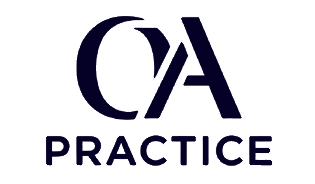D446 Adult Health II - Set 4 - Part 1
Test your knowledge of technical writing concepts with these practice questions. Each question includes detailed explanations to help you understand the correct answers.
Question 1: A patient with emphysema demonstrates tripod positioning when sitting. How does leaning forward on the arms specifically improve their respiratory mechanics during breathing?
Question 2: During acute pancreatitis, a patient develops Grey Turner's sign. What internal process does this bruising pattern in the flanks specifically indicate?
Question 3: A patient with chronic kidney disease develops renal osteodystrophy. Which hormonal dysfunction primarily drives this bone disease beyond simple calcium deficiency?
Question 4: In a patient with cirrhosis, why does giving lactulose for encephalopathy also help prevent spontaneous bacterial peritonitis?
Question 5: A patient taking warfarin eats a large spinach salad daily. Why does this dietary choice specifically interfere with anticoagulation management?
Question 6: During mechanical ventilation weaning, a patient develops paradoxical breathing. What does this chest-abdomen movement pattern indicate about respiratory muscle function?
Question 7: A patient with right ventricular infarction receives nitroglycerin and becomes profoundly hypotensive. Why is this medication particularly dangerous in RV infarcts?
Question 8: In Guillain-Barré syndrome, why does monitoring vital capacity take priority over other respiratory assessments?
Question 9: A patient with severe psoriasis develops psoriatic arthritis. Which joint involvement pattern distinguishes this from rheumatoid arthritis?
Question 10: During treatment for hyperglycemic hyperosmolar state, why is the fluid deficit typically greater than in diabetic ketoacidosis?
Question 11: A patient with bacterial endocarditis develops Osler nodes. What pathophysiological process creates these painful fingertip lesions?
Question 12: In metabolic alkalosis from prolonged vomiting, why does hypokalemia develop despite normal dietary intake?
Question 13: A patient with myxedema coma requires careful rewarming. Why must external heating be avoided in this condition?
Question 14: During sickle cell crisis, why does hydration take priority over pain management in initial treatment?
Question 15: A patient with nephrotic syndrome develops spontaneous venous thrombosis. Which protein loss specifically increases thrombotic risk?
Question 16: In acute respiratory distress syndrome, why does increasing PEEP improve oxygenation despite potentially reducing cardiac output?
Question 17: A patient with acromegaly develops heart failure. What unique cardiac change does growth hormone excess cause?
Question 18: During continuous renal replacement therapy, why is citrate anticoagulation preferred over heparin in certain patients?
Question 19: A patient with hypothyroidism develops myxedema crisis after surgery. Which perioperative factor most likely precipitated this emergency?
Question 20: In carbon monoxide poisoning, why does pulse oximetry show normal readings despite severe hypoxia?
Need Guaranteed Results?
Our exam support service guarantees you'll pass your OA on the first attempt. Pay only after you pass!
Get Exam Support